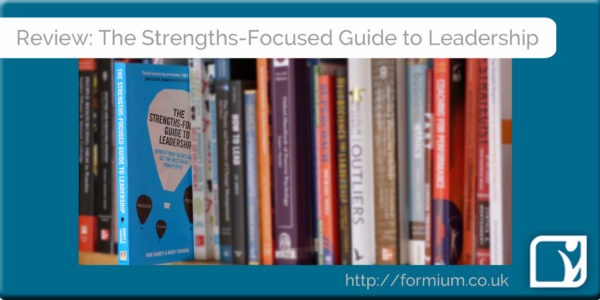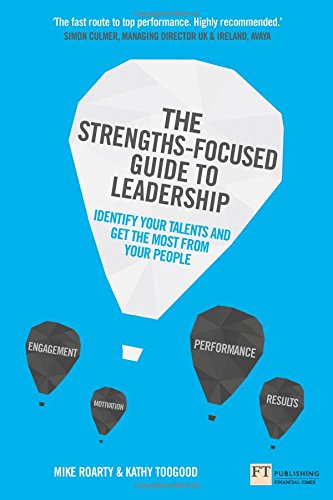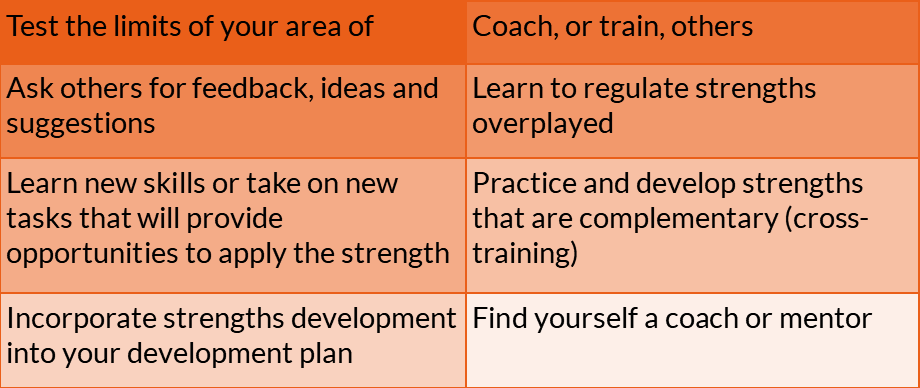If you want a practical manual to understanding how to harness strengths, for you and your team, this book is a great place to start, as it:
- introduces the key concepts of strengths
- provides the research base for more inquisitive readers
- illustrates with narratives
- prompts you with a range of exercises and action points
- explains how to weave strengths into your practice as a leader.
What really sets this book apart is the emphasis on practicality. Numerous exercises help you engage with the ideas. There are questions, forms and questionnaires for you to use. The book looks at embedding strengths in all your work, including coaching, team meetings, recruitment and appraisals. So even if you know the value of using strengths, this is still a worthwhile read.
A further great feature is the use of dialogues, showing the ideas in action (e.g. a coaching session transcript) or as two alternative ‘scripts’ – one using strengths, the other weakness. These stories keep you grounded in reality.
The whys, whats and hows of using strengths
The authors define strengths as something that:
They show the advantage of working with strengths: that you are doing more of what you are best at. They set out the alignment between using strengths and increased sense of authenticity and purpose, increasing satisfaction and engagement. This naturally leads into a more productive cycle, with faster and better results.
For any readers averse to leaving a weakness-focussed approach, the authors provide both the evidence for focussing on strengths, and also how to address weaknesses with a positive mindset.
The MORE model
My strengths: To identify your own strengths, the authors offer five different methods: strength spotting, weakness spotting, a 5 steps strengths map, 360 degree feedback and online strengths assessments. They provide the exercises, questions and examples to help you through whichever of these methods you prefer to use.
Roarty and Toogood suggest 8 ways to develop your strengths:
They also provide 6 ways to manage your weaknesses. To align your goals and strengths, they suggest usual SMART objectives should rather be SMARTIE – adding Important and Energising.
Others’ strengths: The book suggests approaches to introduce strengths as a concept and to support your team in identifying their strengths.
Regular conversations: To embed strengths into daily practice, the authors provide checklists and questions which embody the three principles that will help you develop a strengths mindset:
- start with an outcome focus
- focus on what’s working
- manage weakness from strength
They advise how to use this mindset in one-to-one conversations, development planning, team meetings and coaching: interventions where a strengths-focus has great rewards.
Employee processes: Roarty and Toogood provide specific advice for a strength-based approach for performance appraisals, development discussions and recruitment. Particularly interesting is their approach for adapting to institutional reality: that while you may be required to use certain forms, competencies or expected approaches, you can still use a strengths mindset and techniques to provide a better outcome.
Leadership and teams
The book ends by providing the advice, evidence and resources to use strengths in two key challenges: creating a high-performing team, and in leading change. While specific examples are given, the advice reflects the key messages delivered previously, as detailed above.
You can buy The Strengths-focused guide to leadership, by Mike Roarty and Kathy Toogood, on Amazon UK or Amazon USA
Eszter Molnar Mills is a strength-based leadership and organisation development specialist.
She helps organisations and individuals reach enhanced performance by reflecting on what works, and by developing skills and strategies for improvement.
If you’d like help or advice on using strengths – such as implementing the MORE model, helping you find or use your strengths, or adopt a coaching approach, then please get in touch.




